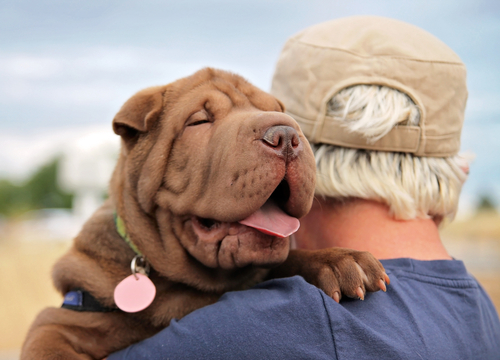While there are varying distinctions between these three different canine jobs, they all come with a degree of necessity. The service dog is needed to perform certain tasks their handler can’t do on their own. The therapy dog, while considered a pet, goes into facilities and offers socialization to those in need. An emotional support animal is recommended by a mental health professional to alleviate some debilitating issues. All three have a job to do, but where does one draw the line of distinction?
Service Dog
 As the title implies, a service dog serves in a specific capacity to aid an individual in certain tasks. Whether it is seeing, hearing or maneuvering, these highly trained dogs take their jobs very seriously. Because of the training, testing and certifications involved to classify these dogs as service animals, they are allowed anywhere their human goes, including public transportation (Planes, trains, busses) restaurants and stores.
As the title implies, a service dog serves in a specific capacity to aid an individual in certain tasks. Whether it is seeing, hearing or maneuvering, these highly trained dogs take their jobs very seriously. Because of the training, testing and certifications involved to classify these dogs as service animals, they are allowed anywhere their human goes, including public transportation (Planes, trains, busses) restaurants and stores.
Therapy Dog
A branch of service dog, a therapy dog still goes through quite a bit of assessment testing and training for the chance to visit patients in hospitals or listen patiently to children who struggle to read. Therapy dogs may be trained for a variety of jobs, but unlike their service dog counterparts, therapy dogs are encouraged to interact with humans, be sociable and engaging. While these dogs are welcome at several venues, they don’t have the same authorization as service dogs and are not allowed in most public facilities unless invited.
Emotional Support
While all dogs offer their families some sort of emotional support throughout their relationship, there are a few owners who need the emotional support of their canine to function on a day to day basis. An emotional support animal doesn’t require any special training or certification. That being said, before one can start calling their dog an emotional support animal, it is best to talk with someone concerning the Americans with Disabilities Act (ADA) as to what documentation, if any, is needed to claim a dog as an emotional support animal.
Dogs wear many hats throughout their relationship with a person. Confidant, ball retriever, bed warmer, garbage disposal; dogs are adaptable in the human world and can shift into their duty at a drop of the hat. Not all dogs, however, are suited to being a service or therapy dog. These unique personalities involve certain skills and talents not all canines possess. There are also several distinctions between what a service dog does, what a therapy dog does and the role an emotional support animal plays.

